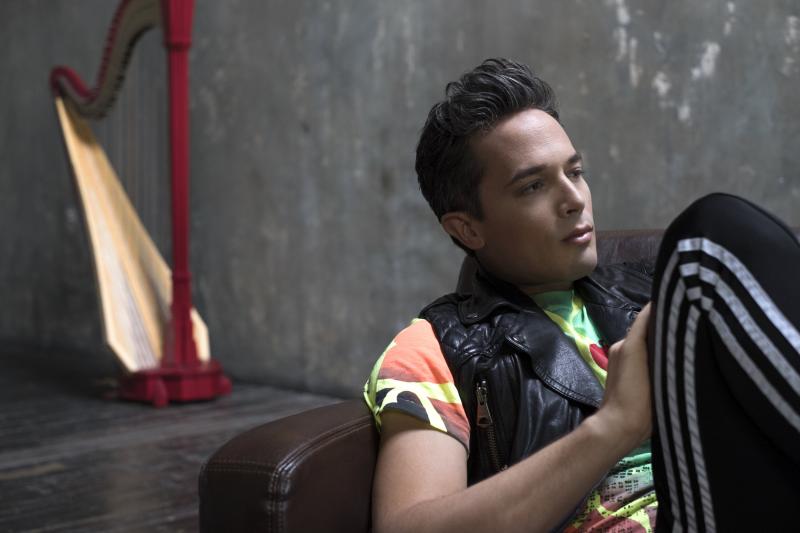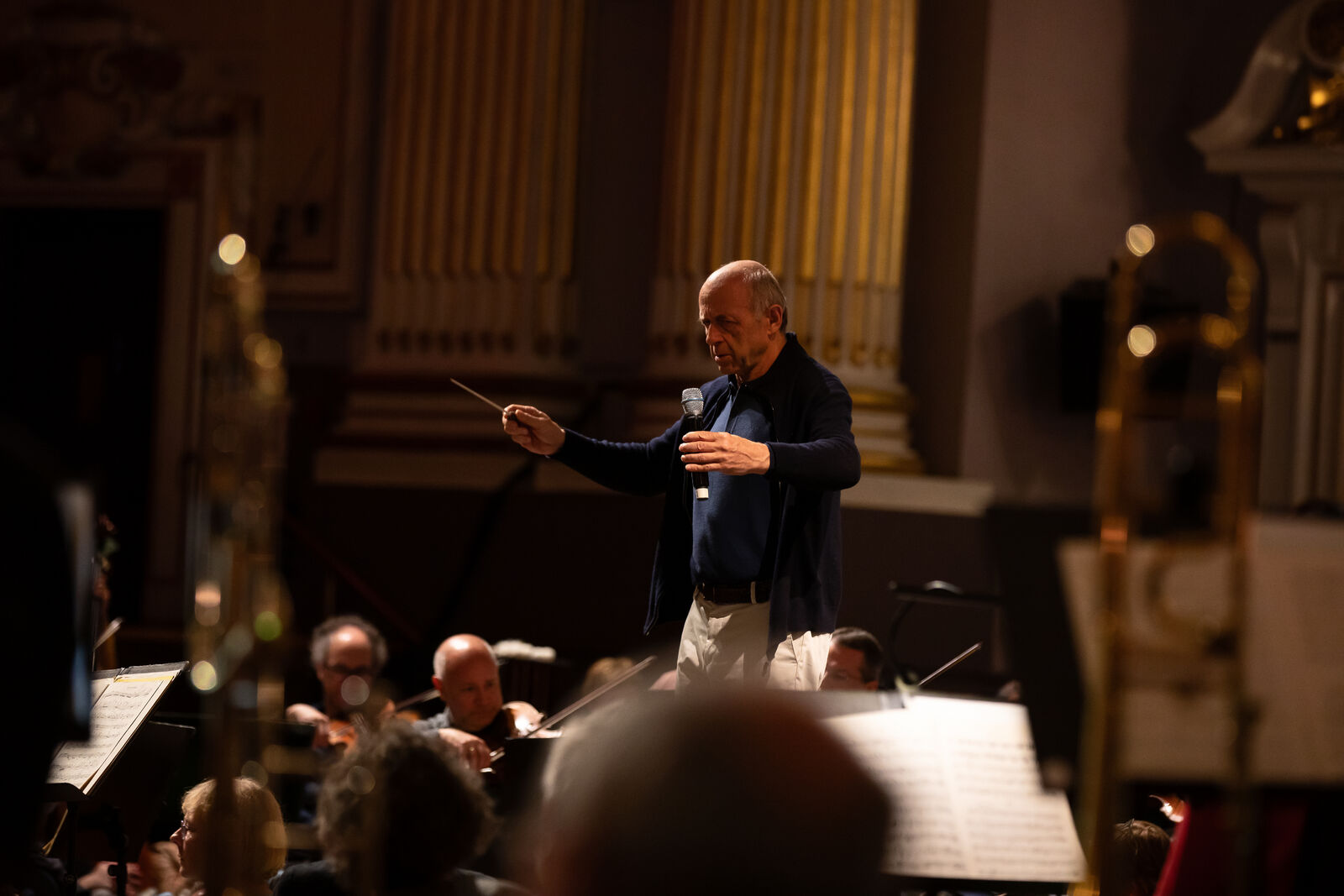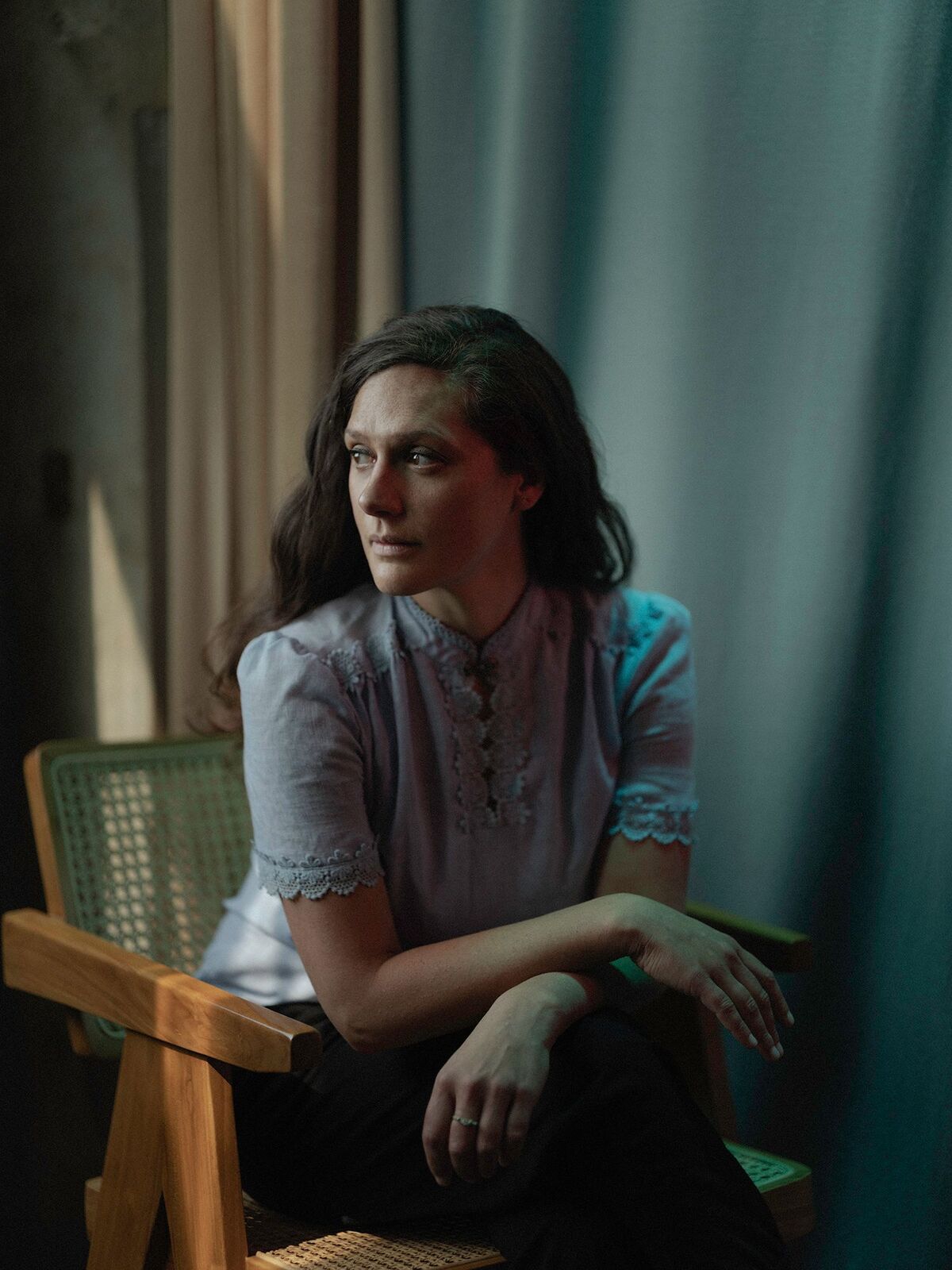Schiff, Budapest Festival Orchestra, Fischer / Emmanuel Ceysson & Friends, Edinburgh International Festival 2023 review - Hungariana and harp | reviews, news & interviews
Schiff, Budapest Festival Orchestra, Fischer / Emmanuel Ceysson & Friends, Edinburgh International Festival 2023 review - Hungariana and harp
Schiff, Budapest Festival Orchestra, Fischer / Emmanuel Ceysson & Friends, Edinburgh International Festival 2023 review - Hungariana and harp
Magyar magic in the Usher Hall, intimate theatricality in the Queen's Hall

You’d feel short-changed if an orchestra like the Budapest Festival Orchestra came to the Edinburgh Festival and didn’t play some Hungarian music, so why not put together a whole concert of the stuff?
And, oh, how naturally they play them! They were joined for Bartók’s Third Piano Concerto – the only component of the programme travelling to the Proms at the weekend – by that prince among Hungarian pianists, Sir András Schiff, and Schiff didn’t so much play the piano as stroke it, so elegantly did he bring the solo line to life. This was playing of the most mellifluous poetry throughout, even in the chunky octave passages, while in sections of the slow movement he seemed to be competing with the orchestral strings as to who could play the most softly.
But the real star of the sound picture was the orchestra. That opening string shimmer was so delectably precise that every note felt individually articulated, and they crafted the slow movement as a gorgeous, soft-focused Nocturne of half-remembered beauty. Fischer conducted the whole concerto in one continuous sweep without a break, making it sound as though it was unfolding spontaneously, and both he and Schiff were in their element in the finale which, in its central section, sounded like Bach refracted through a New York jazz bar.  The concert began with Bartók’s 1915 orchestration of his Romanian Folk Dances. Fischer is never one to take the easy option if he can do something extra-creative instead, so he preceded the orchestral version with the original dances played by three of the BFO string musicians. They made it sound like a piece of spontaneous fun, and it helped to reveal how great was the cloak of refinement that Bartók managed to cast over the music in its orchestral form. Spontaneous isn’t the word you’d choose for his Seven Choruses for Female Voice, at least not as performed by the girls of the National Youth Choir of Scotland. Their intonation was perfect and their tone airily beautiful, though their elegant refinement was quite a contrast to the raw energy of the dances.
The concert began with Bartók’s 1915 orchestration of his Romanian Folk Dances. Fischer is never one to take the easy option if he can do something extra-creative instead, so he preceded the orchestral version with the original dances played by three of the BFO string musicians. They made it sound like a piece of spontaneous fun, and it helped to reveal how great was the cloak of refinement that Bartók managed to cast over the music in its orchestral form. Spontaneous isn’t the word you’d choose for his Seven Choruses for Female Voice, at least not as performed by the girls of the National Youth Choir of Scotland. Their intonation was perfect and their tone airily beautiful, though their elegant refinement was quite a contrast to the raw energy of the dances.
Still, it was dances of a different kind to bring the programme to a rollicking close, Kodály’s Dances of Galánta, another BFO speciality. As played here it sounded like a concerto for orchestra, the spotlight falling on each section in turn with dazzling results. The winds played their lines as though with one eye permanently raised, while the strings surged through their lines, with the violins creating a terrific skirl to their main themes. Fischer conducted with a terrific kick of vim, making the whole piece sound like the soundtrack to a village party. I wonder how these musicians would take to Scottish ceilidh music?...
Somewhere there must be rule that says it’s impossible to do a concert of harp music without featuring both Debussy’s Danse sacrée et danse profane and Ravel’s Introduction and Allegro, both of which were products of the “Harp Wars” between manufacturers Pleyel and Érard in the first decade of the 20th century. Alongside the fact that they’re both great music, the historical backdrop gives their pairing an extra kick of competition. However, it’s a testament to the quality of the programming from harpist Emmanuel Ceysson that the rest of his Queen’s Hall concert at the Edinburgh International Festival was, if anything, even more attention grabbing (★★★★★). In fact it carried a range of colours and dynamics that, until that morning, I’d scarcely have thought possible from the harp.
 That’s because Ceysson plans his programmes with the same touch of theatricality that he gives to his playing. When the audience entered for the first half of his concert, the Queen’s Hall’s curtains were closed and the hall put into artificial darkness (it was 11am!). Ceysson appeared dressed all in black with some red sparkle on his shoes. Why? Because, he explained, his first three pieces were all about the macabre and fantastical. Two pieces, in fact, were inspired by the dark tales of Edgar Allan Poe, and the third by one of the darkest Greek myths.
That’s because Ceysson plans his programmes with the same touch of theatricality that he gives to his playing. When the audience entered for the first half of his concert, the Queen’s Hall’s curtains were closed and the hall put into artificial darkness (it was 11am!). Ceysson appeared dressed all in black with some red sparkle on his shoes. Why? Because, he explained, his first three pieces were all about the macabre and fantastical. Two pieces, in fact, were inspired by the dark tales of Edgar Allan Poe, and the third by one of the darkest Greek myths.
Henriette Renié’s Ballade Fantastique for solo harp is based on Poe’s Tell-Tale Heart, and Ceysson’s playing combined its ravishing lyricism and sweeping melodies with the tick-tock rhythm of nervous energy that increased the dramatic intensity as the piece developed. In André Caplet’s The Masque of the Red Death, death, in the person of Ceysson’s harp, stalked the string quartet that accompanied him on stage. This bespoke group (Raki Singh - pictured above by Phil Singh - and Donald Grant on violins, Ruth Gibson on viola, Christian Elliott on cello) played with gorgeous subtlety, be it in the whirl of the dance or the expressionistic writing of the plague scenes, its shades of horror managing to keep the tension even when Elliott’s cello bow broke in mid-phrase. In Marius Constant’s Harpalycé, Ceysson conjured up a disturbing range or dark, oppressive sounds that seemed to be the very opposite of the angelic brightness most listeners associate with the harp. Shuddering overtones and eerie microtone glissandi, achieved with the aid of what looked like a screwdriver, created such a creepy range of effects that it had me longing for the fresh air of the interval.
And yes, they opened the curtains for the second half so that light flooded in for the Debussy and Ravel. More superstitious types might even say that it affected the music too, with gorgeously suave string playing for the Debussy and terrific sparkle in the Ravel, the fluid, airborne beauty borne up still further with the addition of Maximiliano Martín’s clarinet and Charlotte Ashton’s flute. This was a dramatic as well as a musical masterclass, with first-rate playing and a cracking sense of atmosphere.
Explore topics
Share this article
The future of Arts Journalism
You can stop theartsdesk.com closing!
We urgently need financing to survive. Our fundraising drive has thus far raised £49,000 but we need to reach £100,000 or we will be forced to close. Please contribute here: https://gofund.me/c3f6033d
And if you can forward this information to anyone who might assist, we’d be grateful.

Subscribe to theartsdesk.com
Thank you for continuing to read our work on theartsdesk.com. For unlimited access to every article in its entirety, including our archive of more than 15,000 pieces, we're asking for £5 per month or £40 per year. We feel it's a very good deal, and hope you do too.
To take a subscription now simply click here.
And if you're looking for that extra gift for a friend or family member, why not treat them to a theartsdesk.com gift subscription?
more Classical music
 Kilsby, Parkes, Sinfonia of London, Wilson, Barbican review - string things zing and sing in expert hands
British masterpieces for strings plus other-worldly tenor and horn - and a muscular rarity
Kilsby, Parkes, Sinfonia of London, Wilson, Barbican review - string things zing and sing in expert hands
British masterpieces for strings plus other-worldly tenor and horn - and a muscular rarity
 From Historical to Hip-Hop, Classically Black Music Festival, Kings Place review - a cluster of impressive stars for the future
From quasi-Mozartian elegance to the gritty humour of a kitchen inspection
From Historical to Hip-Hop, Classically Black Music Festival, Kings Place review - a cluster of impressive stars for the future
From quasi-Mozartian elegance to the gritty humour of a kitchen inspection
 Shibe, LSO, Adès, Barbican review - gaudy and glorious new music alongside serene Sibelius
Adès’s passion makes persuasive case for the music he loves, both new and old
Shibe, LSO, Adès, Barbican review - gaudy and glorious new music alongside serene Sibelius
Adès’s passion makes persuasive case for the music he loves, both new and old
 Anja Mittermüller, Richard Fu, Wigmore Hall review - a glorious hall debut
The Austrian mezzo shines - at the age of 22
Anja Mittermüller, Richard Fu, Wigmore Hall review - a glorious hall debut
The Austrian mezzo shines - at the age of 22
 First Person: clarinettist Oliver Pashley on the new horizons of The Hermes Experiment's latest album
Compositions by members of this unusual quartet feature for the first time
First Person: clarinettist Oliver Pashley on the new horizons of The Hermes Experiment's latest album
Compositions by members of this unusual quartet feature for the first time
 Gesualdo Passione, Les Arts Florissants, Amala Dior Company, Barbican review - inspired collaboration excavates the music's humanity
At times it was like watching an anarchic religious procession
Gesualdo Passione, Les Arts Florissants, Amala Dior Company, Barbican review - inspired collaboration excavates the music's humanity
At times it was like watching an anarchic religious procession
 Classical CDs: Camels, concrete and cabaret
An influential American composer's 90th birthday box, plus British piano concertos and a father-and-son duo
Classical CDs: Camels, concrete and cabaret
An influential American composer's 90th birthday box, plus British piano concertos and a father-and-son duo
 Cockerham, Manchester Camerata, Sheen, Martin Harris Centre, Manchester review - re-enacting the dawn of modernism
Two UK premieres added to three miniatures from a seminal event of January 1914
Cockerham, Manchester Camerata, Sheen, Martin Harris Centre, Manchester review - re-enacting the dawn of modernism
Two UK premieres added to three miniatures from a seminal event of January 1914
 Kempf, Brno Philharmonic, Davies, Bridgewater Hall, Manchester review - European tradition meets American jazz
Bouncing Czechs enjoy their Gershwin and Brubeck alongside Janáček and Dvořák
Kempf, Brno Philharmonic, Davies, Bridgewater Hall, Manchester review - European tradition meets American jazz
Bouncing Czechs enjoy their Gershwin and Brubeck alongside Janáček and Dvořák
 Solomon, OAE, Butt, QEH review - daft Biblical whitewashing with great choruses
Even a top soprano and mezzo can’t make this Handel paean wholly convincing
Solomon, OAE, Butt, QEH review - daft Biblical whitewashing with great choruses
Even a top soprano and mezzo can’t make this Handel paean wholly convincing
 Two-Piano Gala, Kings Place review - shining constellations
London Piano Festival curators and illustrious friends entertain and enlighten
Two-Piano Gala, Kings Place review - shining constellations
London Piano Festival curators and illustrious friends entertain and enlighten
 Echo Vocal Ensemble, Latto, Union Chapel review - eclectic choral programme garlanded with dance
Beautiful singing at the heart of an imaginative and stylistically varied concert
Echo Vocal Ensemble, Latto, Union Chapel review - eclectic choral programme garlanded with dance
Beautiful singing at the heart of an imaginative and stylistically varied concert

Add comment